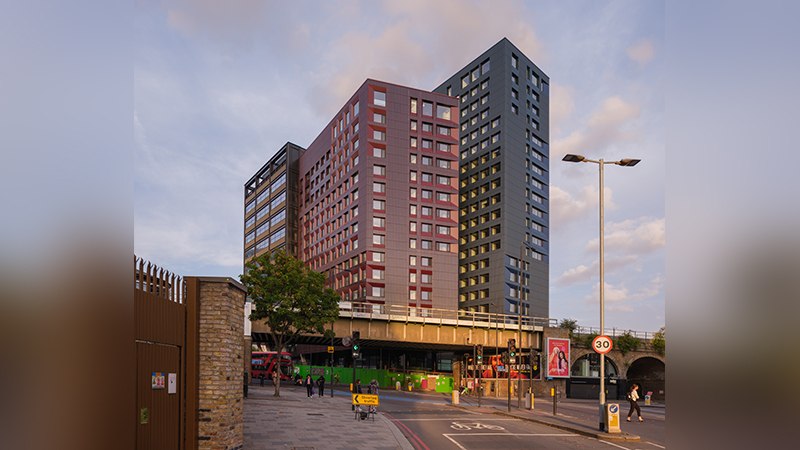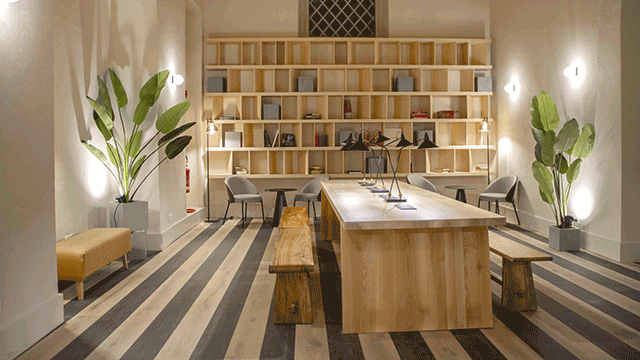COMMENT In the face of a climate emergency, investors, developers and occupiers are striving to create and occupy the “greenest” buildings possible in an attempt to lower the built environment’s carbon emissions.
The construction industry’s damning statistics need no introduction: responsible for around 40% of global carbon emissions and a third of the world’s waste, it makes grim reading. But with a significant proportion of a building’s lifetime carbon quota exhausted during construction alone, reusing existing buildings becomes an obvious answer to the dilemma of decarbonisation.
Obvious answer
The environmental benefits of building reuse speak for themselves: the typical LETI rating for upfront carbon in construction for a new-build office is around 1,000kg CO2e/sq m (reduced to around 600kg CO2e/sq m for those achieving the highest sustainability credentials). Yet for a good-quality refurbishment, the figure can drop by more than half to achieve below 300kg CO2e/sq m.
We have seen these results first hand at Technique, our reinvention of a former gin distillery in London’s Clerkenwell, where retaining the building’s original structure saved 1,709 tonnes of carbon compared with a demolition and rebuild.
It is clear that reuse is the answer, so why aren’t we seeing more developers jump at the opportunity to revitalise existing buildings, instead of edging towards a situation where regulations create stranded assets?
The government is starting to catch on and new regulations are coming to the fore to enforce higher energy efficiency standards and mitigate carbon impact. By next month, the new Minimum Energy Efficiency Standards will mean that commercial space will need to meet EPC ratings of E or above to be let, even in the middle of a lease term. While the intention is commendable, data from BNP Paribas Real Estate shows that 24% of buildings in inner London already fail to meet this standard.
Disincentivising reuse
Older assets were not designed with today’s needs or regulations in mind, so bringing tired buildings up to date is far more complex (and often more expensive) than starting from scratch with a shiny new sustainable building. A new development can be designed from the outset to reach the highest environmental standards – and thus be awarded accreditations such as BREEAM Outstanding and LEED Platinum, which focus almost entirely on operational efficiency over embodied carbon.
Consequently, the adoption of new MEES regulations could disincentivise reuse and increase demolition of stranded building stock that is ripe for reuse but for which most carbon savings would be embodied in the existing fabric.
So, why would we do it? It is not impossible for older buildings to be brought up to scratch. For example, together with our partner Henderson Park, our remodelling of the former Woolworths HQ in Marylebone – Metropolis – will be one of only a handful of reuse projects to achieve BREEAM Outstanding. But to do so, we had to go the extra mile to achieve the same output as a newer build. It’s little wonder that, without a reflection of embodied carbon in accreditation criteria, developers are opting to demolish and rebuild.
Evolving regulation
To make reuse more mainstream, we need to rethink the views we hold around assessing existing building stock, and regulatory bodies need to evolve and keep up. Combining the past and future allows developers to deliver memorable buildings that will stand the test of time.
It is this mindset that drives us to deliver complex projects which do good for both people and planet. But unless unnecessarily complex restrictions on, for example, fitting heat pumps or replacing windows are renegotiated, developers are bound to shy away when a simpler alternative – to knock down and start again – exists.
To see this approach become mainstream, we need policy reform to recognise the value of embodied, alongside operational, carbon savings. Doing so will prompt our sector to rethink its inclination to start from scratch, unlocking the significant untapped potential of the UK’s existing building stock in the mission to decarbonise the built environment.
New is still good. New can be highly sustainable and energy efficient. But reusing what already exists is even better for people and planet. Our ambition is to prove that this is possible.
Jacob Loftus is founder and chief executive of General Projects











